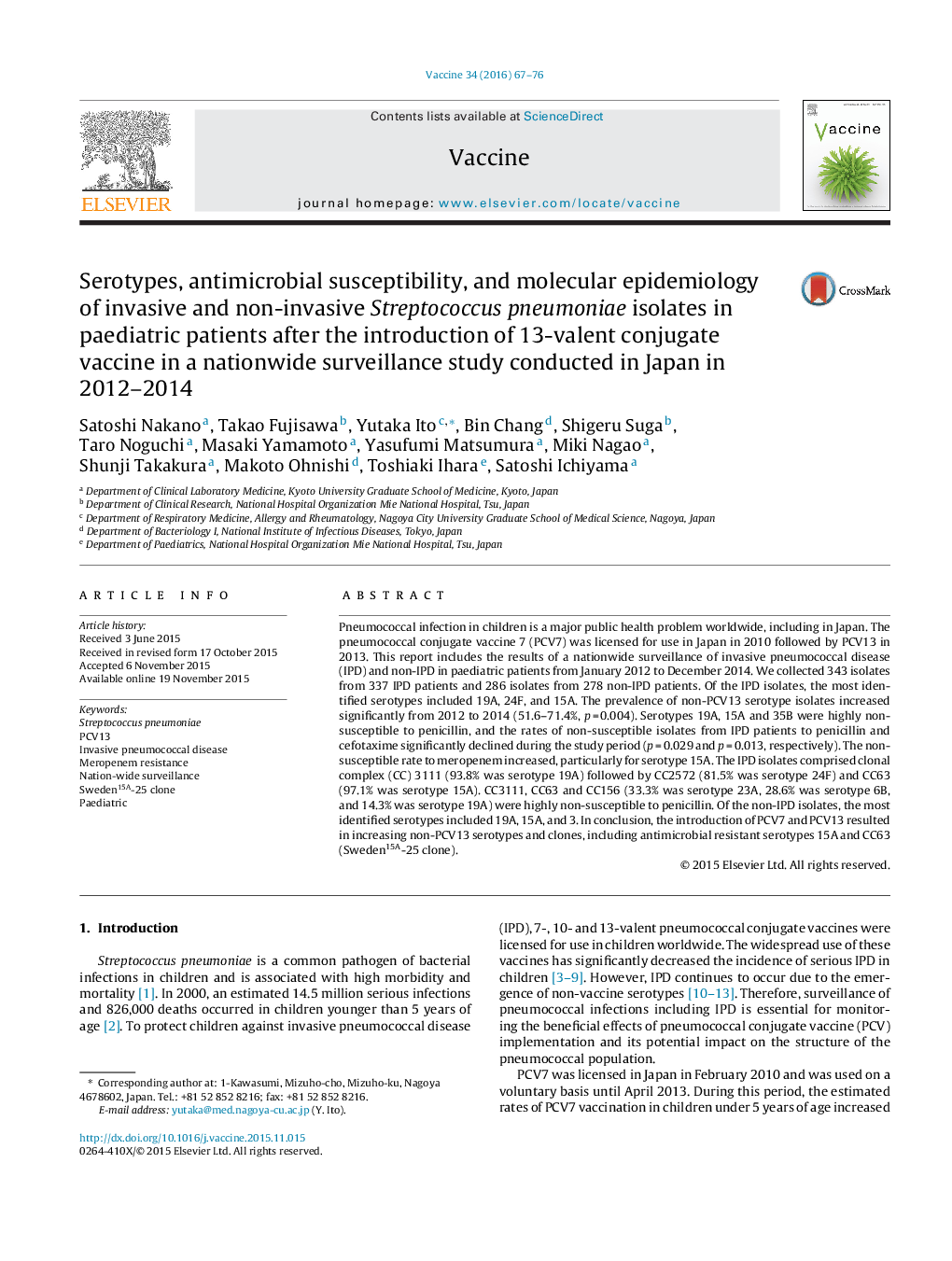| Article ID | Journal | Published Year | Pages | File Type |
|---|---|---|---|---|
| 10963064 | Vaccine | 2016 | 10 Pages |
Abstract
Pneumococcal infection in children is a major public health problem worldwide, including in Japan. The pneumococcal conjugate vaccine 7 (PCV7) was licensed for use in Japan in 2010 followed by PCV13 in 2013. This report includes the results of a nationwide surveillance of invasive pneumococcal disease (IPD) and non-IPD in paediatric patients from January 2012 to December 2014. We collected 343 isolates from 337 IPD patients and 286 isolates from 278 non-IPD patients. Of the IPD isolates, the most identified serotypes included 19A, 24F, and 15A. The prevalence of non-PCV13 serotype isolates increased significantly from 2012 to 2014 (51.6-71.4%, p = 0.004). Serotypes 19A, 15A and 35B were highly non-susceptible to penicillin, and the rates of non-susceptible isolates from IPD patients to penicillin and cefotaxime significantly declined during the study period (p = 0.029 and p = 0.013, respectively). The non-susceptible rate to meropenem increased, particularly for serotype 15A. The IPD isolates comprised clonal complex (CC) 3111 (93.8% was serotype 19A) followed by CC2572 (81.5% was serotype 24F) and CC63 (97.1% was serotype 15A). CC3111, CC63 and CC156 (33.3% was serotype 23A, 28.6% was serotype 6B, and 14.3% was serotype 19A) were highly non-susceptible to penicillin. Of the non-IPD isolates, the most identified serotypes included 19A, 15A, and 3. In conclusion, the introduction of PCV7 and PCV13 resulted in increasing non-PCV13 serotypes and clones, including antimicrobial resistant serotypes 15A and CC63 (Sweden15A-25 clone).
Related Topics
Life Sciences
Immunology and Microbiology
Immunology
Authors
Satoshi Nakano, Takao Fujisawa, Yutaka Ito, Bin Chang, Shigeru Suga, Taro Noguchi, Masaki Yamamoto, Yasufumi Matsumura, Miki Nagao, Shunji Takakura, Makoto Ohnishi, Toshiaki Ihara, Satoshi Ichiyama,
